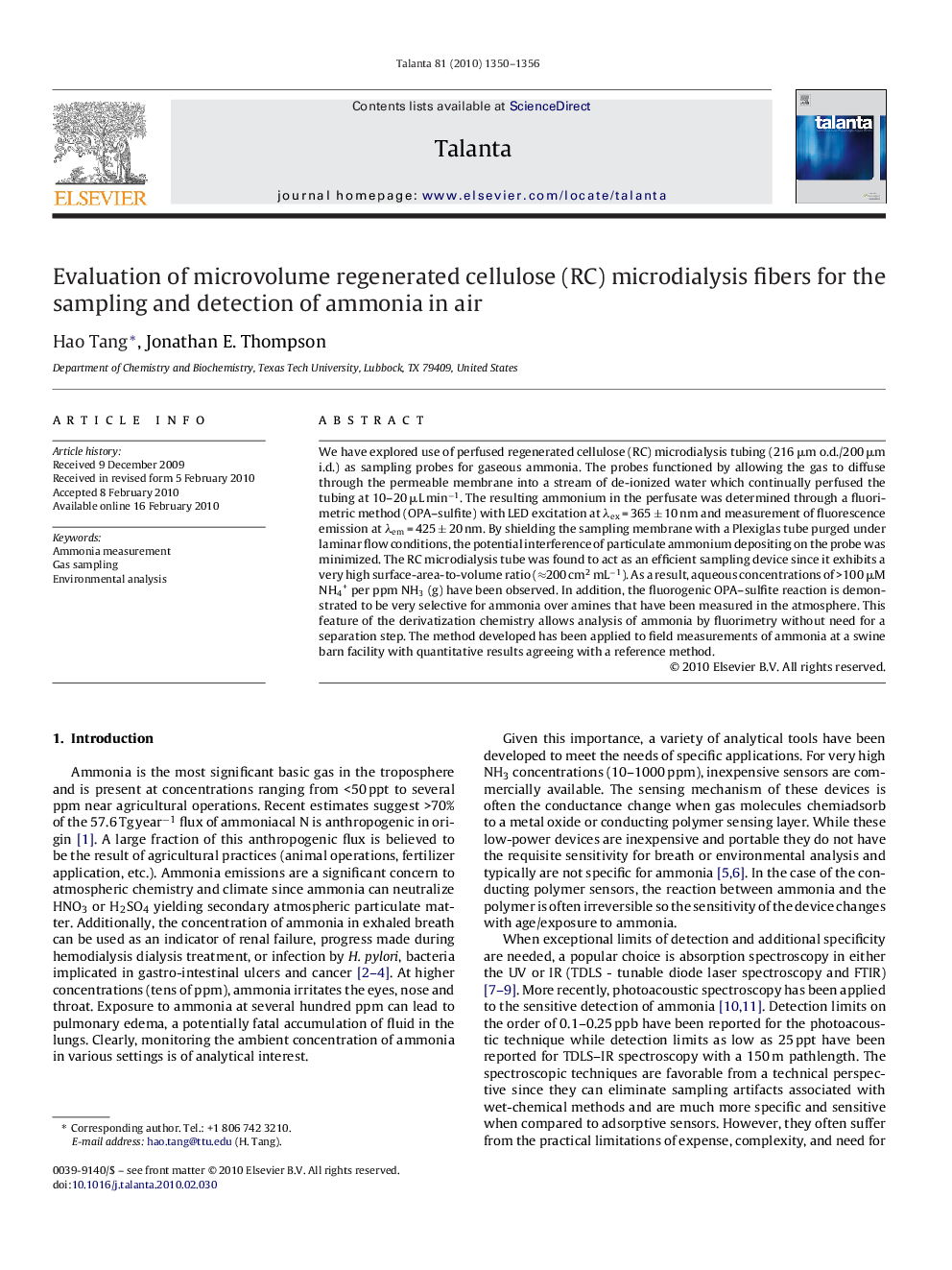| Article ID | Journal | Published Year | Pages | File Type |
|---|---|---|---|---|
| 1242637 | Talanta | 2010 | 7 Pages |
We have explored use of perfused regenerated cellulose (RC) microdialysis tubing (216 μm o.d./200 μm i.d.) as sampling probes for gaseous ammonia. The probes functioned by allowing the gas to diffuse through the permeable membrane into a stream of de-ionized water which continually perfused the tubing at 10–20 μL min−1. The resulting ammonium in the perfusate was determined through a fluorimetric method (OPA–sulfite) with LED excitation at λex = 365 ± 10 nm and measurement of fluorescence emission at λem = 425 ± 20 nm. By shielding the sampling membrane with a Plexiglas tube purged under laminar flow conditions, the potential interference of particulate ammonium depositing on the probe was minimized. The RC microdialysis tube was found to act as an efficient sampling device since it exhibits a very high surface-area-to-volume ratio (≈200 cm2 mL−1). As a result, aqueous concentrations of >100 μM NH4+ per ppm NH3 (g) have been observed. In addition, the fluorogenic OPA–sulfite reaction is demonstrated to be very selective for ammonia over amines that have been measured in the atmosphere. This feature of the derivatization chemistry allows analysis of ammonia by fluorimetry without need for a separation step. The method developed has been applied to field measurements of ammonia at a swine barn facility with quantitative results agreeing with a reference method.
